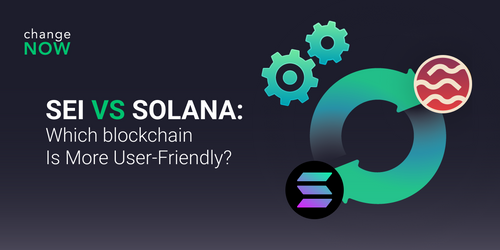Monero (XMR) vs Zcash (ZEC) 2025: Transaction Privacy & Adoption Metrics

In today's world, every click and purchase is tracked, making financial privacy a growing concern. Whether you're trading cryptocurrency, developing a decentralized app, or seeking transaction confidentiality, understanding key players in the privacy coin sector is essential. Enter Monero (XMR) and Zcash (ZEC).
These two are like the Yin and Yang of privacy coins, each with its own philosophy. Monero is all about default anonymity, making sure every transaction is private, no questions asked. Zcash lets you choose: keep your transactions private or be transparent.
This article explains how XMR and ZEC work, their 2025 status, and what it means for you.
Key Takeaways
- Monero delivers privacy by default for all transactions, giving maximum anonymity but facing regulatory headwinds.
- Zcash offers selective privacy: users can choose between shielded and transparent transactions, offering more flexibility and regulatory access but less “always private”.
- Zcash leads in terms of institutional access and exchange presence; Monero dominates in pure privacy‑use cases and censorship‑resistant environments.
- In 2025, both networks will be better. Monero will offer stronger anonymity features, and Zcash will have a bigger shielded pool and be easier to use.
Before we dive in, let’s make sure we’re on the same page with a few key terms you’ll see throughout this comparison.
Glossary of Key Privacy Terms
- Anonymity Set: The number of users among which a given transaction is hidden. Larger sets mean stronger privacy.
- Regulatory Compliance: The capability of a blockchain or coin to interface with financial regulation, audits, or legal frameworks while maintaining some degree of privacy.
- RingCT: A privacy feature in Monero that hides transaction amounts by mixing the sender’s transaction with others, making it impossible to trace the amount or sender.
- Ring Signatures: Monero’s technology, which mixes a user’s transaction with many others, making the true origin untraceable.
- Shielded vs Transparent Addresses: In Zcash’s dual‑address system, shielded addresses enable private transactions; transparent addresses act like standard blockchain addresses.
- Stealth Addresses: One-time addresses used in Monero to hide the recipient’s real address, ensuring privacy in transactions.
- zk‑SNARKs (Zero‑Knowledge Proofs): Advanced cryptographic method that allows verification of a transaction without revealing participant data. Zcash uses this for its shielded transactions.
Why Compare Monero and Zcash in 2025?
With privacy coins becoming more popular, it's important to see that Monero and Zcash don't work the same way. Your decision to buy, sell, or swap one over the other should come down to which approach fits you best. Here’s a closer look at how they compare.
Let’s have a look at the comparison sheet to see how XMR and ZEC differ at a glance.
At‑a‑Glance: Monero vs. Zcash 2025
| Metric | Monero (XMR) | Zcash (ZEC) |
|---|---|---|
| Privacy Model | Mandatory (all transactions): all XMR transactions are private by default | Selective (shielded or transparent): ZEC allows user choice |
| Transaction Finality | Around 25 mins (~30 confirmations) [9] | Longer for shielded transactions; transparent ones are faster |
| TPS (abstract/real) | ~4‑6 TPS (PoW limitations) [22] | ~12‑18 TPS (optimized throughput) [23] |
| Avg. Transaction Fee | ~$0.216 (Nov 6 2025): XMR average fee [14] | Not reliably confirmed for 2025: no verified public average for shielded vs transparent |
| Key Technology | Ring Signatures, RingCT, CLSAG: core tech of XMR [1] [2] [3] | zk‑SNARKs (Halo 2): ZEC uses zero-knowledge proofs [6] [7] |
| Mining Algorithm | RandomX (ASIC-resistant) | Equihash (PoW) |
| Market Metrics | Daily transactions: ~25,140 (Nov 6, 2025) [24] | Shielded pool appox. 4.5M ZEC (~27.5% of supply) as of Oct, 2025 [25] |
| Liquidity & Access | Limited on many centralized exchanges; stronger usage on DEX/P2P platforms | Widely listed on major centralized exchanges, more accessible |
Theoretical TPS values are approximate; actual throughput depends on network conditions and privacy overhead.
What is Monero (XMR)?
Monero (XMR) is a leading privacy coin launched in 2014, designed to provide complete transaction confidentiality. Monero is maintained and developed by the Monero Research Lab and an active community of independent developers, ensuring continuous upgrades and privacy-focused innovations. Unlike Bitcoin, all Monero transactions are private by default, hiding the sender, receiver, and amount using Ring Signatures, Stealth Addresses, and RingCT, which are essential for preserving user anonymity. This built-in privacy makes Monero particularly appealing to users who value financial sovereignty and confidentiality.
Monero is maintained and developed by the Monero Research Lab and an active community of independent developers, ensuring continuous upgrades and privacy-focused innovations. The network runs RandomX, a CPU-optimized, ASIC-resistant proof-of-work algorithm that further strengthens decentralization, ensuring that Monero remains accessible to a wide range of participants.
By 2025, these continuous improvements, including CLSAG and Bulletproof+, guarantee fully untraceable transactions, reinforcing Monero’s status as a cornerstone privacy coin [1]. Users can safely buy, sell, or cover XMR positions on supported platforms while maintaining full control over their funds.
For detailed instructions on safely moving your XMR due to the Exodus Wallet drop in support, check out the article: Exodus Drops Monero Support — Here’s How to Move Your XMR Safely.
What is Zcash (ZEC)?
Zcash is an implementation of the "Zerocash" protocol, offering an advanced level of privacy through its zero-knowledge proving system. Zcash is supported and developed by the Electric Coin Company (ECC), which oversees the implementation of privacy features and promotes adoption of shielded transactions. Built on Bitcoin’s code, Zcash ensures the confidentiality of transaction metadata, including sender, receiver, and amount, through zk-SNARKs (zero-knowledge succinct non-interactive arguments of knowledge). This cryptographic method allows people to make private transactions without putting the blockchain's security and integrity at risk.
Zcash uses zk-SNARKs to validate transactions without showing addresses or amounts. This approach provides users more freedom while still following the rules [20]. ZEC operates on a dual-address system: transparent addresses, similar to Bitcoin, and shielded addresses that keep transaction details completely private.
The integration of Halo 2 recursive proofs has made shielded transactions faster and more scalable [6].

Browser and mobile wallets, including Brave Wallet, allow users to securely buy, sell, or swap ZEC.
 By 2025, Zcash will continue to expand its adoption, making it a practical choice for those seeking privacy without sacrificing convenience or compliance.
By 2025, Zcash will continue to expand its adoption, making it a practical choice for those seeking privacy without sacrificing convenience or compliance.
Privacy and Regulatory Impact on Shielded Transactions 2025
Monero: Privacy by Default Monero (XMR) blends each transaction with multiple others via RingCT, combined with stealth addresses. The research indicates that the network may include anomalous peers, which could impact monitoring efforts. Upcoming upgrades such as Bulletproofs++ and CLSAG improve efficiency and privacy.
Zcash: Privacy by Choice
Zcash (ZEC) uses zk‑SNARKs (Halo 2) to enable shielded transactions. According to a November 2025 report by CoinDesk, about 20–25 % of circulating ZEC and ~30 % of transactions involved shielded addresses [26]. As it turns out, risks include potential deanonymization if the shielded pool remains relatively small.
As it turns out, risks include potential deanonymization if the shielded pool remains relatively small.
Daily Monero transactions have dropped after delistings by major exchanges in 2025. Widespread delistings in the UK, EU, and South Korea reduce centralized liquidity and push users toward DEX/P2P platforms. Zcash supports both transparent and shielded transaction options, offering a pathway for exchanges to comply with regulatory requirements like the Travel Rule. According to BingX news, the Electric Coin Company released its Q4 2025 roadmap focusing on wallet infrastructure and privacy features [27].
The new EU MiCA (EU Markets in Crypto‑Assets Regulation) rules [18] and FinCEN updates [17] in 2025 could change how people use shielded ZEC transactions. 
Updated 2025 guidance from the U.S. Financial Crimes Enforcement Network (FinCEN) emphasizes stricter KYC/AML compliance for virtual asset service providers, which may slow adoption of shielded ZEC transactions on centralized platforms.
Let’s analyze the impact on Zcash shielded transactions.
MiCA (EU Markets in Crypto‑Assets Regulation)

MiCA [18] introduces mandatory reporting and transparency requirements for crypto platforms in the EU. The requirement for EU exchanges to monitor and document transactions makes the use of shielded addresses less transparent for regulators. This influences ZEC. As a result, the institutional and retail traders in the EU may prefer transparent transactions or fully compliant platforms, which slows shielded adoption.
FinCEN (US Financial Crimes Enforcement Network)

Updated Travel Rule and reporting requirements make anonymous transactions more difficult to comply with legally. Due to the ZEC effect, users who do shielded transactions on centralized exchanges may have to deal with limits or extra KYC/AML checks. As an outcome, the shielded pool grows more slowly compared to transparent transactions, as platforms balance privacy and regulatory compliance [17].
Practical Takeaways for Investors
- Investors and traders should consider that a portion of ZEC remains less accessible to institutional clients until regulatory clarity improves. Monitoring the share of shielded transactions and wallet integrations (e.g., Brave Wallet, official ZEC wallets) helps anticipate liquidity and adoption trends.
- Monitoring the share of shielded transactions and wallet integrations (e.g., Brave Wallet, official ZEC wallets) helps anticipate liquidity and adoption trends.
According to ForkLog, as of 31 Oct 2025, the market capitalization of ZEC exceeded $6.2 billion, while Monero stood at about $5.9 billion [28]. You’d probably notice that this shift suggests increasing institutional interest in ZEC and rising liquidity pressure on XMR.
 You’d probably notice that this shift suggests increasing institutional interest in ZEC and rising liquidity pressure on XMR.
You’d probably notice that this shift suggests increasing institutional interest in ZEC and rising liquidity pressure on XMR.
Use Cases & Real‑World Applications
Monero: The Privacy Purist’s Choice Monero has progressed from its specialized origins to become a viable instrument for individuals who value digital privacy. It is utilized by privacy-conscious people, developers, and small enterprises requiring the safeguarding of transactions or the protection of sensitive payment information from public exposure. The coin's technology, comprising Ring Signatures, Stealth Addresses, CLSAG, and Bulletproof+, guarantees that each transaction is both unlinkable and untraceable. Monero significantly contributes to privacy research, facilitating breakthroughs subsequently integrated into other blockchain networks.
Let's see how it works with the illustrated mechanisms:
1. Ring Signatures
Monero uses Ring Signatures to hide the true sender of a transaction. The diagram below illustrates how a regular signature differs from a ring signature, which mixes the transaction with others, ensuring its origin remains untraceable.

2. Stealth Addresses
Monero also uses Stealth Addresses to hide the recipient’s real address, ensuring privacy in transactions. This figure demonstrates how Stealth Addresses inhibit third parties from monitoring the transaction.

3. RingCT
RingCT hides the amounts of transactions by mixing them with other transactions. This makes it impossible to find out how much money is being sent.
The illustration below shows how RingCT operates in a way that keeps the details of the transaction confidential.

Zcash: The Compliant Privacy Solution
Zcash’s adoption ranges from individual users to enterprise applications. With approximately 4.5 million ZEC now in shielded addresses, representing a significant portion of its total supply, the growing share of shielded supply demonstrates increasing use of its privacy features.
 Moreover, integrations such as the browser-wallet support in Brave Wallet enable users to conduct shielded Zcash transactions directly in their web browser [17]. This data tends to show that Zcash is viable for businesses and those who require a mix of privacy and regulatory‑compliant access.
Moreover, integrations such as the browser-wallet support in Brave Wallet enable users to conduct shielded Zcash transactions directly in their web browser [17]. This data tends to show that Zcash is viable for businesses and those who require a mix of privacy and regulatory‑compliant access.
Market Performance & On‑Chain Metrics (Q4 2025)
Monero (XMR)
According to BitInfoCharts [15], XMR recorded ~30,141 daily transactions. The CCN report reveals that XMR showed resilience with positive annual returns despite regulatory headwinds [24].

Zcash (ZEC)
According to CryptoRank (30 Oct 2025), the shielded pool reached ~4.9 M ZEC [29].

Galaxy research (Nov 2025) indicates ZEC fundamentals are stable, while market perception and liquidity have improved [30].
Conclusion: Your Privacy Strategy for 2025
In 2025, choosing between Monero and Zcash means deciding between full sovereignty and practical accessibility.
Monero (XMR) represents the pure privacy play: a conviction bet on financial sovereignty that demands operational sophistication. While its mandatory privacy provides unparalleled anonymity, the regulatory environment has reshaped its liquidity profile. Trading XMR now requires comfort with DEXs and P2P platforms, making it better suited for strategic accumulation than rapid trading. In contrast, Zcash (ZEC) offers pragmatic privacy exposure with mainstream accessibility. Its continued presence on major exchanges provides the liquidity and volume that active traders need. The selective privacy model allows for easier compliance with regulations, which institutions find important, making ZEC the top choice for traders seeking privacy without complications.
So in the end, whether you go for Monero or Zcash probably depends less on tech and more on how much privacy feels worth the trade-off.
Your Trading Strategy
- Use ZEC for active trading and gradual onboarding into the privacy sector.
- Accumulate XMR through alternative liquidity channels as a long-term hedge against financial surveillance.
- Track Zcash’s shielded adoption rate as a key signal of privacy adoption momentum.
For Beginners Starting Their Privacy Journey
Think of it this way: Zcash is your onboarding ramp, and Monero is your final destination. Start with Zcash if you're new to privacy coins. Easy access to exchanges like Binance and Coinbase makes the learning curve gentler. You can explore privacy features without immediately tackling DEX trading complexities. Progress to Monero once you're comfortable with self-custody and alternative liquidity sources. Monero represents the pinnacle of privacy, balancing operational challenges with unparalleled anonymity.
The Bottom Line
XMR acts as sovereign digital cash for users who prioritize complete autonomy, while ZEC evolves as privacy infrastructure aligned with regulatory integration. A balanced approach – ZEC for flexibility, XMR for resilience – offers the most effective privacy portfolio in 2025’s fragmented financial landscape.
Sources
- What is Monero
- Ring Signatures Explained
- Stealth Addresses Overview
- RingCT Research Paper
- RandomX Algorithm
- Halo 2 Explained
- What Are zk-SNARKs
- Zcash Docs – Wallet UX
- Monero transactions
- CoinMarketCap Glossary – Ring Signatures
- CoinDesk Report – Zcash Adoption 2025
- ChainCatcher – Zcash Shielded Supply Report
- Yahoo Finance – Zcash Shielded Pool 4.5 M ZEC
- Zechub Dashboard – Zcash Network Metrics
- BitInfoCharts – Monero Network Stats
- BitInfoCharts – Zcash Transaction Fees
- FinCEN Notice – KYC/Travel Rule 2025
- EU MiCA Regulation 2022/2554
- GetMonero Official Docs – Technology Stack
- CoinDesk – Privacy Coins Outlook 2025
- What is Zcash
- Monero Technical Spec
- Zcash Feature UX Checklist
- Monero (XMR) price stats and information
- Zcash Shielded Pool Surpasses 4.5M ZEC as Privacy Adoption Grows
- Crypto’s Anti-Surveillance Boom: Zcash, Monero and the Return of Anonymity
- ECC Roadmap






